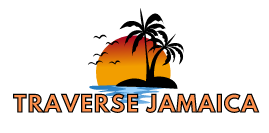Jamaican Independence Day: Celebrations and History
On August 6, Jamaicans worldwide celebrate Independence Day, marking the island’s full freedom from British rule in 1962. But this day is more than a milestone on a calendar — it’s a powerful symbol of identity, culture, and pride. From historical struggles to vibrant modern-day celebrations, here’s everything you need to know about Jamaican Independence Day.
A Brief History of Jamaica Before Independence
To understand Independence Day, it’s important to know where Jamaica started.
-
1494: Christopher Columbus arrives in Jamaica, claiming it for Spain.
-
1655: The British take over from the Spanish and make Jamaica a British colony.
-
1600s–1838: Jamaica becomes a key hub in the transatlantic slave trade. Africans are brought to the island as slaves to work on sugar plantations.
-
1834–1838: Slavery is abolished. Former slaves gain limited freedoms, but true equality is still far off.
-
1930s–1940s: Political consciousness grows. Workers strike for better wages and conditions, sparking the beginning of the labor movement.
Path to Independence
In the 20th century, Jamaican leaders began pushing for greater autonomy:
-
1944: Jamaica gains universal adult suffrage — all adults can vote.
-
1958: Jamaica joins the West Indies Federation, a short-lived political union of British Caribbean colonies.
-
1961: A referendum leads to Jamaica withdrawing from the federation.
-
August 6, 1962: Jamaica officially becomes an independent nation, with its own constitution, parliament, and Governor-General as head of state (still representing the British monarch).
On that historic day, the Union Jack (British flag) was lowered, and the new black, green, and gold Jamaican flag was raised. The colors symbolize the strength and creativity of the people (black), the island’s lush vegetation (green), and its wealth and sunshine (gold).
What Independence Means for Jamaicans
Independence was about more than just cutting ties with Britain. It meant:
-
Self-governance: Making decisions for Jamaican people by Jamaican leaders.
-
Cultural pride: Celebrating Afro-Caribbean identity, traditions, music, and language.
-
Economic autonomy: Building industries, systems, and policies for national growth.
-
Global presence: Jamaica took its place on the world stage — in sports, politics, and the arts.
Despite the progress, Jamaica still faces challenges like economic inequality, crime, and debates around its constitutional monarchy (the British monarch remains symbolic head of state). There are active discussions about becoming a republic, removing the monarch, and electing a Jamaican head of state.
How Jamaica Celebrates Independence Day
Independence Day kicks off the high point of Emancipendence, a week-long observance that begins with Emancipation Day (August 1), which marks the end of slavery. The celebrations are colorful, patriotic, and deeply cultural.
1. The Grand Gala
Held annually at the National Stadium in Kingston, this massive state-sponsored event includes:
-
Marching bands and military parades
-
Dance and music performances (reggae, dancehall, ska, and folk)
-
Costumed performers and traditional drumming
-
Aerial flyovers and dazzling fireworks
The Gala blends entertainment with national pride, highlighting both Jamaica’s roots and its future.
2. Jamaica Festival (Festival Song Competition)
Started in 1966, this national competition invites musicians to create patriotic songs that reflect Jamaican identity. It has launched legendary hits and is still a major part of the Independence season.
3. Street Parades and Community Events
All across the island, towns and villages host their own:
-
Floats and parades
-
Street dances and concerts
-
Flag-raising ceremonies
-
Community cookouts and family gatherings
People proudly wear the national colors — black, green, and gold — and decorate homes, cars, and public spaces.
4. Cultural Exhibitions and Traditional Arts
Museums, schools, and cultural centers offer:
-
Historical displays and documentaries
-
Art exhibits and poetry readings
-
Traditional Jamaican storytelling and folklore (like Anansi stories)
-
Local craft fairs
5. Church Services and National Reflection
Independence Day often starts with ecumenical services across churches, where Jamaicans give thanks and reflect on the nation’s journey. These services also focus on themes of unity, justice, and progress.
6. Food and Family
No Jamaican celebration is complete without food. Popular dishes include:
-
Jerk chicken and pork
-
Ackee and saltfish (Jamaica’s national dish)
-
Festival, bammy, and fried plantains
-
Sorrel, rum punch, and other local drinks
Families gather to enjoy the day, whether at home, the beach, or street events.
How the Diaspora Celebrates
Jamaica has a large and vibrant diaspora community — especially in the U.S., U.K., and Canada. Jamaicans abroad host:
-
Independence Day parades and festivals (like those in New York, Toronto, and London)
-
Caribbean carnivals
-
Cultural showcases and church services
-
Virtual events and flag-raising ceremonies
These gatherings keep cultural ties strong and give second- and third-generation Jamaicans a chance to connect with their heritage.
Looking Forward: Jamaica at the Crossroads
In 2022, Jamaica marked 60 years of independence under the theme “Reigniting a Nation for Greatness.” The milestone sparked national conversations about:
-
Becoming a republic (like Barbados did in 2021)
-
Strengthening the economy
-
Reducing crime and inequality
-
Investing in education, youth, and the creative industries
For many Jamaicans, independence is ongoing — not just political, but social and economic.
Final Thoughts
Jamaican Independence Day is a celebration of freedom, resilience, and culture. It honors the struggles of the past, celebrates the richness of Jamaican life today, and keeps hope alive for a brighter future.
Whether you’re dancing at the Grand Gala in Kingston, waving a flag in Toronto, or cooking up jerk chicken in your backyard, August 6 is a time to say: “We likkle, but we tallawah.”
(Translation: We may be small, but we are mighty.)









